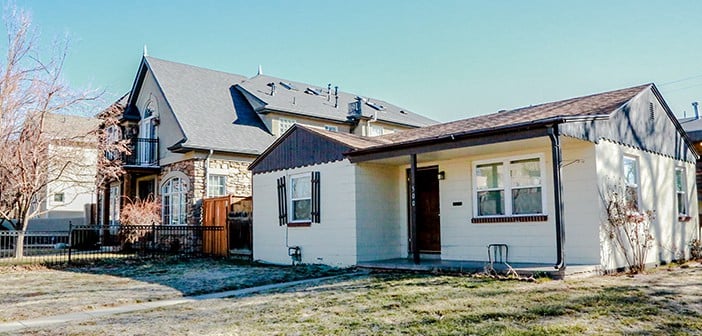The Top 8 Real Estate Calculations Every Investor Should Memorize

Despite what many of us math-allergic folk would prefer, real estate does involve some math. Luckily, most of the formulas are simple and straight-forward. In fact, if you can master the calculations below, you should be just fine.
The Top 8 Real Estate Calculations Every Investor Should Memorize
Cap Rate
Net Operating Income / Total Price of Property
Example:
NOI: $25,000
Total Price (Purchase + Rehab): $300,000
$25,000 / $300,000 = 0.083 or an 8.3 Cap Rate
This calculation is mostly used for valuing apartment complexes and larger commercial buildings. It can be used for houses and small multifamily too, but operating expenses are erratic with houses (because you don’t know how often and how bad your turnovers will be).
Related: The No. 1 Mistake New Real Estate Investors Make and 4 Ways to Avoid It
You want to have a cap rate that is at least as good, preferably better, than comparable buildings in the area. I almost always want to be at an 8 cap rate or better, although in some areas, that’s not really possible. And always be sure to use real numbers or your own estimates when calculating this. Do not simply use what’s on the seller-provided pro forma (or as I call them, pro-fake-a).
Rent/Cost
Monthly Rent / Total Price of Property
Example:
Monthly Rent: $1,000
Total Price of Property (Purchase + Rehab): $75,000
Rent/Cost = $1,000 / $75,000 = 0.0133 or a 1.33% Rent/Cost
This is a great calculation for houses and sometimes small multifamily apartments. That being said, it should only be used when comparing the rental value of like properties. Do not compare the rent/cost of a property in a war zone to that in a gated community. A roof costs the same, square foot for square foot, in both areas. And vacancy and delinquency will be higher in a bad area, so rent/cost won’t tell you what your actual cash flow will be. The the old 2% rule can lead investors astray, and they shouldn’t use it. But when comparing like properties in similar areas, rent/cost is a very helpful tool.
Gross Yield
Annual Rent / Total Price of Property
Example:
Annual Rent: $9,000
Total Price (Purchase + Rehab): $100,000
Gross Yield = $9,000 / $100,000 = .09 or a 9% gross yield
This is basically the same calculation as above but flipped around. It’s used more often when valuing large portfolios from what I’ve seen, but overall, it serves the same purpose as rent/cost.
Debt Service Ratio
Net Operating Income / Debt Service
Example:
NOI: $25,000
Annual Debt Service: $20,000
Debt Service Ratio = $25,000 / $20,000 = 1.25
This is the most important number that banks look at and is critical for getting financing. Generally, a bank will look at both the property’s debt service ratio and your “global” debt service ratio (i.e. the debt service ratio of your entire company or portfolio).
Anything under 1.0 means that you will lose money each month. Banks don’t like that (and you shouldn’t either). Generally, banks will want to see a 1.2 ratio or higher. In that way, you have a little cushion to afford the payments in case things get worse.
Cash on Cash
Cash Flow / Cash In Deal
Example:
Cash Flow (Net Operating Income – Debt Service): $10,000
Cash Into Deal: $40,000
Cash on Cash: $10,000 / $40,000 = .25 or 25%
In the end, this is the most important number. It tells you what kind of return you are getting on your money. In the above example, if you had $40,000 in the deal and made $10,000 that year, you made 25%. This is a critical calculation not only when it comes to valuing a property, but also when it comes to evaluating what kind of debt or equity structure to use when purchasing it.
The 50% Rule
Operating Income X 0.5 = Probable Operating Expenses
Example:
Operating Income: $100,000
Operating Expenses = $100,000 * 0.5 = $50,000
This is a shorthand rule that I judge to be OK. It is for estimating the expenses of a property. Whenever possible, use real numbers (i.e., the operating statement), but this is good for filtering out deals that don’t make sense. Just remember, a nicer building will have a lower ratio of expenses to income than a worse one and other factors, like who pays the utilities come into play. Don’t simply rely on this rule.
Related: 43 Things That Significantly Upgrade Home For Less Than $35 On Amazon
The 70% Rule
Strike Price = (0.7 X After Repair Value) – Rehab

Want more articles like this?
Create an account today to get Divito Real Estate Group best blog articles delivered to your inbox
Example:
After Repair Value: $150,000
Rehab: $25,000
Strike Price = (0.7 X $150,000) – $25,000 = $80,000
This is another rule like the 50% rule, although I think this one is better. This one is for coming up with an offer price. Always crunch the numbers down to the closing costs before actually purchasing a property. But if you offer off the 70% rule, you should be just fine as long as your rehab estimate and ARV (after repair value) estimates are correct.
Comparative Market Analysis
Unfortunately, there’s no real calculation for this. It’s mostly used for houses, and it’s all about finding the most similar properties and then making adjustments so that a homeowner or investor would find each deal identical. The MLS is by far the best for this, but Zillow can work too (just don’t rely on the Zestimate). For a more detailed explanation, go here.
In the end, the math isn’t that bad. No rocket science here luckily. Instead, there are just a few handy calculations and rules to evaluate properties before purchase and analyze their performance afterward. Memorize these, and you should be fine.
https://dannydivito.com/2019/08/12/cap-rate-a-must-have-number-for-rental-and-commercial-investors/






